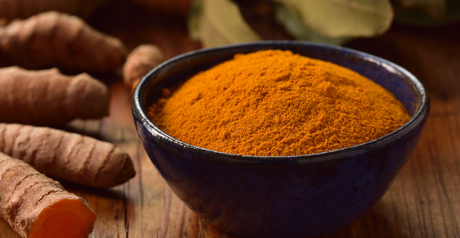
The Role of Hemosiderin
Hemosiderin is an iron-storage protein that forms when ferritin, a primary iron-storage protein, becomes saturated with iron. It is vital to the body’s natural defense mechanism against iron overload, playing a critical role in neuroprotection. It is generally considered stable and non-toxic. However, recent studies have shown that hemosiderin may not always be able to prevent the release of free iron from its stores. An accumulation of hemosiderin may contribute to oxidative stress and the formation of reactive oxygen species (ROS), which can cause damage to cells and contributes to the disorder’s progression.
How Iron Escapes
One explanation of how iron escapes from hemosiderin is through iron-catalyzed oxidative stress. This occurs when iron reacts with oxygen, producing free radicals, which can damage cells. Another way in which iron can escape from hemosiderin is through the activity of certain enzymes that break down the protein complex and release iron.
Once free iron molecules are exposed long-term to tissue, they can lead to oxidative stress and damage nearby neurons. Beside superficial siderosis, free iron has been linked to neurological disorders such as Alzheimer’s disease, Parkinson’s disease, and multiple sclerosis. In all these conditions, the excess iron found in the brain is thought to play a role in the pathology of the disease.
Iron is an essential element for normal cellular function. It supports crucial processes in the body, such as oxygen transport, electron transport, and DNA synthesis. Unfortunately, iron is toxic in excess. Free iron ions can produce reactive oxygen species, which can cause cellular damage and ultimately result in cell death.
Exploring Curcumin
 Turmeric Root
Turmeric Root
Enter curcumin, a component of the spice turmeric. It’s gained considerable attention due to its potent anti-inflammatory, antioxidant, neuroprotective, and chelator properties. Its potential has been studied as an iron chelator in neurodegenerative disorders with an iron element similar to superficial siderosis. Curcumin has been found to bind to iron ions and prevent them from forming ROS. The antioxidant properties also help remove existing ROS from the brain. Recent studies have also revealed that curcumin can act as an iron chelator, binding to and eliminating excess free iron from the body. Curcumin’s ability to chelate iron is due to its unique molecular structure, which contains multiple hydroxyl and carbonyl groups that can form stable complexes with metal ions. Additionally, curcumin has been shown to cross the blood-brain barrier, allowing it to access the brain and remove excess free iron from the CSF. In one study, curcumin treatment significantly reduced iron levels in the brains of mice with Parkinson’s disease, leading to improved motor function and reduced oxidative stress.
However, the bioavailability of commercially available curcumin is relatively low, meaning that only a tiny percentage of the curcumin taken by mouth is absorbed and utilized by the body. Various curcumin formulations have been developed to enhance its bioavailability, including nanoparticle-based formulations and using adjuvants like piperine.
Crossing the Blood-Brain Barrier
The blood-brain barrier is a highly selective semipermeable membrane that separates circulating blood from the brain and central nervous system. This barrier is designed to protect the brain from harmful substances that may be present in the bloodstream, including toxins and pathogens. However, it can also prevent beneficial substances like curcumin from crossing into the brain.
Fortunately, several bioavailable enhanced forms of curcumin are now available to cross the blood-brain barrier. Here is a closer look at how this is possible:
- Lipid-based delivery systems: One approach bioavailable enhanced curcumin can cross the blood-brain barrier is through lipid-based delivery systems. These systems encapsulate curcumin in lipids or fats, which allows it to bypass the liver and travel directly to the brain. This method was effective in several studies, including one published in the journal PLoS One, which found that a lipid-based curcumin supplement improved cognitive function in patients with Alzheimer’s.
- Nanoparticles: Nanoparticles are another method for crossing the blood-brain barrier. These tiny particles can be engineered to deliver curcumin directly to the brain. One study published in the journal ACS Nano found that curcumin nanoparticles could cross the blood-brain barrier and accumulate in brain tissue in mice. The study concluded that curcumin nanoparticles could be a promising option for treating brain diseases.
- Combining with Piperine: Another method to increase the bioavailability of curcumin is by combining it with piperine, an alkaloid found in black pepper. Piperine has been shown to increase curcumin’s bioavailability by inhibiting certain liver enzymes that break down the compound. A study published in the Journal of Psychopharmacology found that combining curcumin with piperine was effective in improving cognitive function and reducing symptoms of anxiety and depression in healthy older adults.
Overall, these three methods offer promising options. While more research is needed to understand the long-term effects of these methods, the current evidence suggests that bioavailable enhanced curcumin could be a valuable supplement for promoting brain health and potentially treating neurological disorders.
Enhanced Curcumins Brands
There are now several bioavailable enhanced forms of curcumin available over the counter. These are designed to be more easily absorbed by the body so that users can get the full benefits of curcumin without consuming large amounts of turmeric. One brand of bioavailable curcumin is Theracurmin. This product uses a process called “micronization” to create tiny particles of curcumin more easily absorbed by the body. Theracurmin is more bioavailable than standard curcumin supplements.
Another bioavailable form of curcumin is CurcuWIN. This form uses a specialized delivery system that helps to increase the absorption of curcumin in the body. Like Theracurmin, CurcuWIN is more bioavailable than standard curcumin supplements.
A third bioavailable form of curcumin is called Longvida. This formulation uses a unique lipid-based delivery system that helps to protect curcumin as it travels through the body, allowing for better absorption. Longvida is effective in reducing inflammation and improving brain function.
In addition to these brands, several other bioavailable curcumin supplements are available over the counter, each with its unique delivery system and advantages.
- Theracurmin: A randomized, double-blind, placebo-controlled study published in the Journal of Nutritional Science and Vitaminology found that Theracurmin was more effective in reducing inflammation and oxidative stress than a placebo in healthy individuals. The study concluded that Theracurmin could be a helpful supplement for promoting overall health and preventing chronic disease.
- CurcuWIN: A study published in the Journal of Medicinal Food found that CurcuWIN was effective in reducing inflammation and oxidative stress in individuals with metabolic syndrome. The study concluded that CurcuWIN could be a valuable supplement for improving metabolic health and reducing the risk of chronic disease.
- Longvida: A randomized, double-blind, placebo-controlled study published in the Journal of Psychopharmacology found that Longvida effectively improved cognitive function and reduced anxiety in healthy older adults. The study concluded that Longvida could be a promising supplement for promoting brain health and reducing the risk of cognitive decline.
Stay Safe
Some potential dangers and cautions should be considered when using curcumin as an iron chelator supplement.
- Interactions with medications: Curcumin may interact with certain medications, particularly blood thinners like warfarin. This can increase the risk of bleeding and other complications. Speaking with a healthcare professional before starting a curcumin supplement if you are taking any medications is important
- Gastrointestinal side effects: Curcumin supplements may cause gastrointestinal side effects, such as nausea, diarrhea, and indigestion. These side effects are generally mild and go away on their own, but in some cases, they can be more severe. If you experience persistent gastrointestinal symptoms, you should stop taking the supplement and speak with a healthcare professional.
- Allergic reactions: Some people may be allergic to curcumin or turmeric. Allergic reactions can cause various symptoms, including hives, itching, and difficulty breathing. If you experience these symptoms after taking a curcumin supplement, you should stop taking it immediately and seek medical attention.
- Pregnancy and breastfeeding: there is not enough research to determine whether curcumin is safe during pregnancy or while breastfeeding. As a result, when pregnant or breastfeeding, it’s recommended to avoid curcumin supplements.
- Quality control issues: Not all curcumin supplements are created equal. Some may be contaminated with harmful substances or may not contain the amount of curcumin advertised on the label. Always choosing a reputable brand manufactured according to CGMP guidelines and speaking with a healthcare professional before starting a curcumin supplement are important
Curcumin may be a unique alternative for iron chelation and neuroprotection, potentially beneficial to superficial siderosis patients. It is essential to be aware of the potential dangers and cautions associated with its use. It is always recommended to speak with a healthcare professional before starting any new supplement regimen and to monitor for any potential side effects carefully.
Reviewed M. Levy MD, Ph.D. 02.16.23
References:
- Kell DB, Pretorius E. No effects without causes: the Iron Dysregulation and Dormant Microbes hypothesis for chronic, inflammatory diseases. Biol Rev Camb Philos Soc. 2018;93(3):1518-1557. doi:10.1111/brv.12414
- Zecca L, Youdim MBH, Riederer P, Connor JR, Crichton RR. Iron, brain aging, and neurodegenerative disorders. Nat Rev Neurosci. 2004;5(11):863-873. doi:10.1038/nrn1537
- Maccarrone M, Meli R, Finazzi-Agrò A. Lysosomal iron release from rat liver: effects of iron overload and selective lysosome rupture. Arch Biochem Biophys. 1992;294(1):237-242. doi:10.1016/0003-9861(92)90595-i
- Diagram A, Fogel R, Daya S. Curcuminoids: Potential therapeutic agents in neurodegenerative diseases. Curr Drug Targets. 2014;15(6):543-50.
- Li C, Li Q, Liu X, et al. Curcumin attenuates iron accumulation and oxidative stress in the liver and brain of aged rats. Exp Gerontol. 2018;104:38-45.
- Parihar MS, Hemnani T. Alzheimer’s disease pathogenesis and therapeutic interventions: Special emphasis on natural products. Curr Neuropharmacol. 2004;2(4):321-36.
- Wu J, Li Q, Wang X, et al. Curcumin reduces brain iron accumulation and improves motor performance in a transgenic mouse model of Parkinson’s disease. J Neurochem. 2018;147(6):662-75.
- Castillo, J., Kayed, R., Porter, N. A., Xu, H., Atwood, C. S., & Cotman, C. W. (2002). Hemosiderin deposits in Alzheimer’s disease: a source of iron that contributes to oxidative stress. Free Radical Biology and Medicine, 33(11), 1477-1486.
- Ghosh S, et al. Liposomal formulations of curcumin: recent advances and future perspectives. Expert Opin Drug Deliv. 2014;11(3):365-87.
- Suresh D, et al. Nanoparticulate drug delivery systems for cancer chemotherapy. Mol Membr Biol. 2010;27(7):215-31.
- Liu Y, et al. Nanoparticle-mediated brain-targeted delivery of resveratrol for Alzheimer’s disease treatment. Biomaterials. 2016;101:60-74.
- Shoba G, et al. Influence of piperine on the pharmacokinetics of curcumin in animals and human volunteers. Planta Med. 1998;64(4):353-6.
- Cox KH, et al. Investigation of the effects of solid lipid curcumin on cognition and mood in a healthy older population. J Psychopharmacol. 2015;29(5):642-51.

